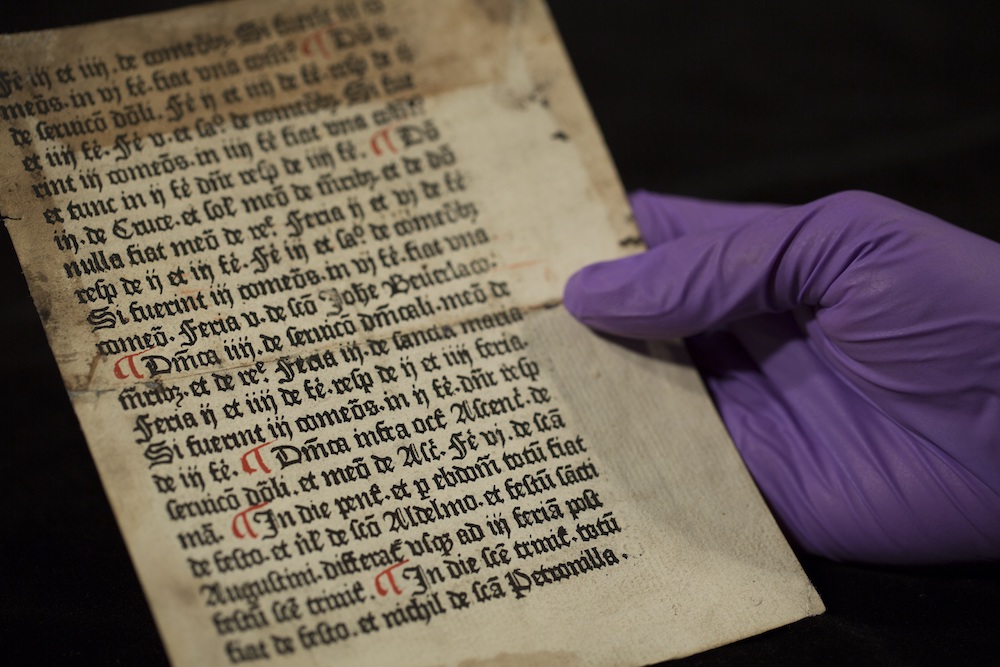540-Year-Old Page from Medieval Priests’ Handbook Discovered

A librarian in England has stumbled upon a rare page from the early days of book printing.
The 540-year-old leaf comes from a medieval priests' handbook that had been printed by William Caxton, who introduced the printing press to England, according to a statement from the University of Reading.
"I suspected it was special as soon as I saw it," said Erika Delbecque, a special collections librarian at the University of Reading, who found the paper hidden in an archive. "It is incredibly rare to find an unknown Caxton leaf, and astonishing that it has been under our noses for so long." [The 25 Most Mysterious Archaeological Finds on Earth]
The double-sided page has black-letter typeface and red paragraph marks that gave it away as an early western European printing, according to the university.
"The leaf had previously been pasted into another book for the undignified purpose of reinforcing its spine," Delbecque said in the statement. Delbecque and her colleagues figured out that in 1820 a librarian at the University of Cambridge saved the page from the book spine but apparently didn't realize its worth. The 15th-century leaf then ended up in a private collection that was purchased by the University of Reading 20 years ago.
The page dates back to late 1476 or early 1477, when Caxton printed the handbook known as the "Sarum Ordinal" or "Sarum Pye." (The Bodleian Library at the University of Oxford has a copy of a poster advertising the manual, and claims it is the earliest surviving printed ad in English publishing history.) Priests consulted this Latin text for instructions on what biblical readings to use and how to dress at Mass on different religious feast days for English saints.
First written by St. Osmund, the Bishop of Salisbury, in the 11th century, these guidelines were widely used in Britain during the Middle Ages, until the Protestant Reformation. The University of Reading librarians know of only one other set of fragments from the Caxton version of this handbook, in the form of eight pages from a different part of the text, housed at the British Library in London.
Sign up for the Live Science daily newsletter now
Get the world’s most fascinating discoveries delivered straight to your inbox.
After setting up his printing press in London in 1476, Caxton mass-produced books like Chaucer's "Canterbury Tales" and the first English versions of classics such as "Aesop's Fables," and Ovid's "Metamorphoses." Caxton is also often credited with printing some of the first Bible verses in English.
"It is very rare that an unknown piece of printing by William Caxton is brought to light," Lotte Hellinga, former deputy keeper at the British Library and an expert on Caxton, said in a statement. "Its condition is good, considering that it spent some 300 years bound in the spine of a book and another 200 resting forgotten in an album of fragments rescued from other bindings."
The University of Reading has the page on display in the school's Special Collections department this month.
Original article on Live Science.











